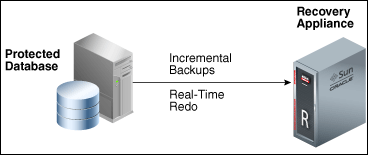The idea for Real-Time Redo is to reach zero RPO for every kind of database and this includes ones with and without DG. As you can see in my last post, where I showed how to configure Real-Time Redo for one database, some little steps need to be executed and they are pretty similar than a remote destination for archivelog for DG.
But if you noticed, the configuration for the remote destination was defined as ASYNC, and hinted like that at ZDLRA docs (“Protection of Ongoing Transactions” or at “How Real-Time Redo Transport Works”). In the same post, I suggested as “controversial” because the ASYNC does not guarantee the RPO zero.
You can see more in the DataGuard docs at (Oracle Data Guard Protection Modes and Oracle Data Guard Concepts and Administration), but the resume it is:
- ASYNC: The primary database does not wait for the response from a remote destination.
- SYNC/NOAFIRM: The Primary database holds commit until the remote destination report that received the redo data. It does not wait until the remote site report that wrote the data in the disc.
- SYNC/AFFIRM: The primary database holds commit until the remote destination report that received redo data and wrote it at the disk.
You can read with more details the difference here: Best Practices for Synchronous Redo Transport and Best Practices for Asynchronous Redo Transport.
The idea is simple, if you use ASYNC, there is no guarantee for zero data loss between the primary database and the remote destination.
